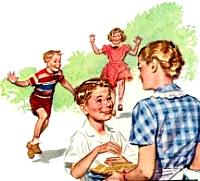 It can be difficult to practice good nutritional habits in a child care setting if for no other reason, most little ones come in with snacks from home that are sometimes not so healthy. When Alpha Cares researched best practices for child care centers, we discovered that many chose not to undertake the various food programs due to the hassle of tedious and necessary reporting. However, owners and management never sacrificed food and nutrition value in their preparation of daily children meals. Our conclusion: nutrition was second only to safety in a child care provider setting.
It can be difficult to practice good nutritional habits in a child care setting if for no other reason, most little ones come in with snacks from home that are sometimes not so healthy. When Alpha Cares researched best practices for child care centers, we discovered that many chose not to undertake the various food programs due to the hassle of tedious and necessary reporting. However, owners and management never sacrificed food and nutrition value in their preparation of daily children meals. Our conclusion: nutrition was second only to safety in a child care provider setting.
There are many ways, however, that child care facilities can take it a step further and provide children an opportunity to learn those important healthy eating habits. Not only that, but there is a significant amount of money, courtesy of the stimulus plan, that is earmarked for child care providers of all sizes and in every state. These funds are being made available for community food projects, including the national “Know Your Farmer, Know Your Food” initiative and even those child care providers who want to start a garden on site can qualify for these funds. What better way to teach a child good nutrition while also giving them perhaps their first opportunity to play a role and nurture a garden that will yield fruits and veggies? Depending on your region of the country, you could easily turn a small plot of land (along flower beds, fence lines in the play area, etc) into:
- A tomato patch
- An herb garden (also ideal for window sills)
- A Strawberry patch
- Even fruit trees (although they those children who plant them won’t reap the benefits, they will still marvel at how “their” tree is growing)
The possibilities really are endless. These are the perfect ideas for getting the little ones out after a cold winter and once the summer months begin, they will be able to see what a little patience and tiny little green thumbs can produce. It instills teamwork and provides an ideal opportunity to reiterate the importance of eating healthy.
If you’re interested in knowing more about the many grants and programs available, visit the Department of Agriculture’s Food, Nutrition & Health page. It has many great tips and of course, information on qualifying and applying for any of the stimulus funds. Rest assured, the Alpha Cares team stands ready to show you how easy a seamless transition can be with any of the grants or government programs. Contact us today!




